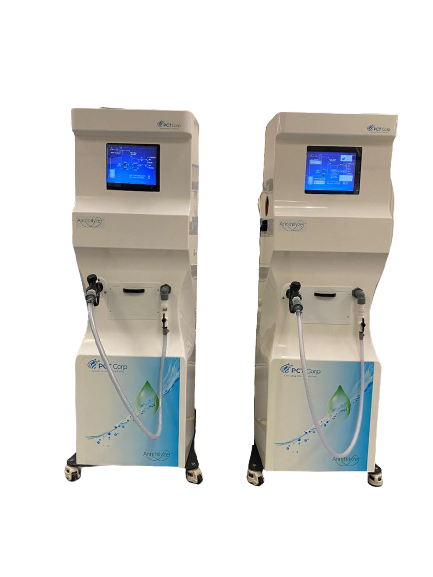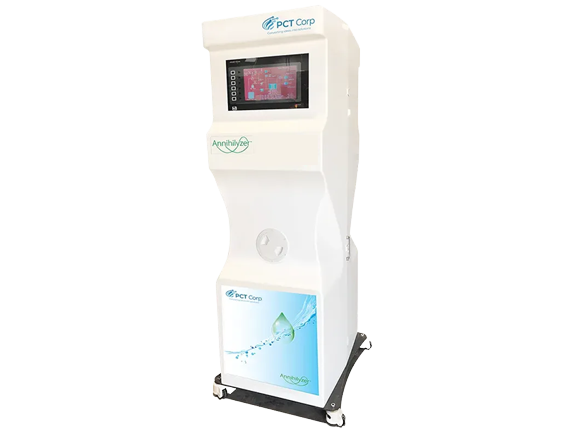CONVENIENCE, EFFICIENCY, AND OTHER BENEFITS
Disinfecting spaces in order to combat the spread of pathogens is an essential practice across all types of industries. Wherever humans or pets are present on a regular basis, there will be the threat of disease transmission, and the managers responsible for those spaces are anxious to find disinfecting solutions that can help them fight the problem as efficiently, affordably, and safely as possible.
PCT is committed to providing on-site generation solutions that fit perfectly into a range of different contexts, accomplishing both sanitizing and disinfecting at the levels that guests, customers, and employees expect. A major part of that effort is the offering of an on-site generator that can be used to produce both disinfectant and surfactant fluids on demand. Through water electrolysis, this compact generator instantly produces fluid when it is needed for application, resulting in many advantages for facilities that choose this route over traditional stocking methods.


Why a Hypochlorous Acid Generator?
Hypochlorous acid is the key active compound in PCT’s disinfectant product. As this powerful fluid gains attention across industries for its surprising effectiveness against some of today’s most concerning pathogens.
HOCl is a compound that occurs naturally in the human body, and is a key component of the immune system’s defense against disease. The process of water electrolysis, which applies an electrical charge to a solution of water and sodium chloride, produces a catholyte solution (containing HOCl) and an anolyte solution, which is effective as a sanitizing agent. The catholyte solution uses free active chlorine and its unique properties to quickly attack and kill pathogens on hard, nonporous surfaces. Using PCT’s on site generator to produce these fluids maximizes their value and accessibility.
On-Site Generation Advantages
In on-site generation a HOCl disinfectant generator makes the disinfecting process incredibly convenient and efficient for staff. Particularly for facilities that have aggressive environmental responsibility goals and/or mandates, this piece of equipment can help them go green and eliminate many elements of unnecessary waste.
- Employee man-hours and energy conservation. With an on site generator, there is no need to take inventory of bulk disinfecting fluids, reorder product, receive it at the loading dock, and stock it until it is needed.
- Waste reduction. Bulk product is delivered in plastic containers, which must be disposed of after use. In addition, pallets and other materials used during the delivery process must be discarded. A hypochlorous acid generator on site can be utilized with reusable containers, virtually eliminating waste.
- Carbon footprint reduction. Elimination of product delivery reduces carbon footprint in the forms of manufacturing and fuel use by delivery vehicles.


Further Benefits of On Site Generation
Using hypochlorous acid for disinfecting conveys important health benefits beyond the elimination of product listed pathogens at over 99% completion on hard, nonporous surfaces. By switching to PCT’s disinfectant, a facility can avoid the secondary health issue of volatile organic compounds (VOCs), which are a byproduct of many chemical based disinfectants. These VOCs are emitted and remain airborne, particularly in indoor environments, for a very long time. The human airway and lungs are negatively affected by these compounds, and they are particularly hazardous for those with already-existing respiratory conditions.
The fluids produced by PCT’s HOCl disinfectant generator produce no VOCs or quaternary ammonium compounds (quats), and employees do not need to use any PPE for health and safety while using them. The elimination of disposable masks and gloves during the disinfecting process is yet another factor in reducing costs, waste, and carbon footprint through the use of an on site generator for disinfectant production.
